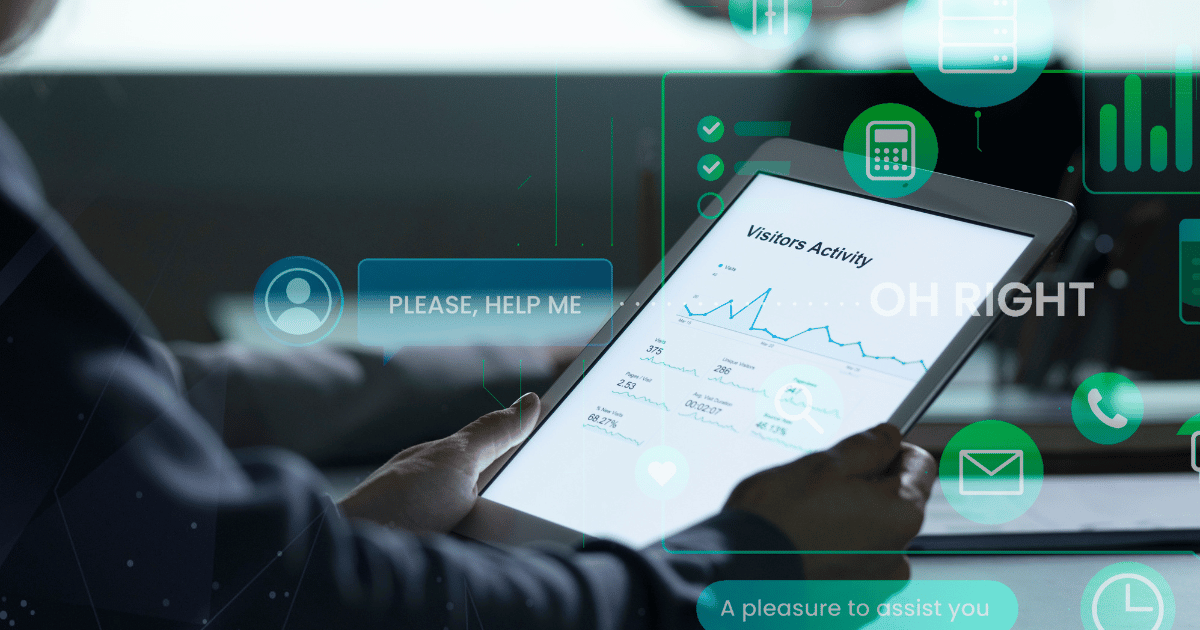The Impact of Emerging Technologies on Internal Audit Processes

Emerging technologies are undoubtedly transforming the internal audit landscape, revolutionising the way auditors work and enhancing the value they provide to organisations. By leveraging innovative technologies, internal auditors can optimise processes, improve efficiency and gain deeper insights into business operations. However, they also present some challenges, especially if they are not managed successfully. In this article, three areas of impact are explored, with the aim of both seeing their potential, noting examples of how they are already being used, and being reminded of the difficulties that they may bring with them.
EXPLORE ALL EIMF TRAINING COURSES HERE AND BOOST YOUR CAREER
IMPACT | Data Analytics
Data analytics refers to the process of examining, cleansing and modelling raw data to uncover useful insights, draw conclusions and support decision-making. In the world of internal auditing, data analytics is transforming traditional processes, making them more efficient, effective and comprehensive.
At its core, internal auditing assesses an organisation’s internal controls, corporate governance, and accounting processes to ensure compliance with laws, prevent fraud and maintain operational efficiency. Here, data analytics comes into play as a powerful tool enabling auditors to evaluate vast quantities of data, identify patterns, trends and anomalies, and make predictive analyses. By leveraging data analytics, auditors can automate routine checks, reducing manual efforts and minimising human errors. This not only accelerates the audit process but also frees up time for auditors to focus on more complex and riskier areas.
The use of data analytics also allows for continuous monitoring and auditing. Traditional audit methods, which often involve periodic reviews, can miss irregularities occurring between audit cycles. In contrast, data analytics provides real-time oversight, thereby enhancing the responsiveness of the internal audit function.
However, despite its benefits, the use of data analytics also presents challenges. Firstly, handling and interpreting massive data sets require advanced technical skills. Secondly, the potential for data privacy breaches can escalate, necessitating robust data protection measures. Lastly, ensuring data quality is vital, as poor quality data can lead to inaccurate results, potentially significantly affecting the audit’s reliability and decision-making processes.
One prominent example of data analytics in internal auditing is at Royal Bank of Scotland (RBS). The bank has integrated data analytics into its internal audit processes to help identify potential fraud and financial misconduct. Using advanced algorithms and statistical methods, RBS is able to analyse millions of transactions in real-time, thereby significantly improving the detection of fraudulent activities and boosting its regulatory compliance.
As businesses generate and manage an ever-growing amount of data, the role of data analytics in internal auditing will only continue to grow. Thus, integrating data analytics into internal audit processes is not merely a progressive move; it’s becoming a necessity for maintaining robust control environments.
EXPLORE ALL EIMF TRAINING COURSES HERE AND BOOST YOUR CAREER
IMPACT | AI and Machine Learning Algorithms
Artificial Intelligence (AI) and Machine Learning (ML) are revolutionary technologies that have become integral to various industries, and internal auditing is no exception. AI refers to computer systems capable of performing tasks that typically require human intelligence, like decision-making, speech recognition and problem-solving. ML, a subset of AI, involves computer algorithms that improve automatically through experience and the use of data.
Within internal auditing, these technologies provide auditors with the tools to analyse vast amounts of data accurately and efficiently, enhancing the auditing process’s scope, precision and effectiveness. AI and ML algorithms can also help identify patterns, anomalies and risks that might be difficult to detect using traditional methods. This capability not only reduces the time spent on manual data analysis but also enables continuous, real-time audit and monitoring. Furthermore, by identifying potential risk areas, auditors can focus their efforts on issues of significant impact, fostering more strategic and risk-focused audits.
Despite their potential, these technologies also pose challenges for internal auditors. These technologies require advanced technical knowledge, potentially widening the skills gap. Additionally, the ‘black box’ nature of some algorithms can lead to difficulties in understanding the basis for outputs, thereby affecting transparency. Lastly, potential ethical issues surrounding AI use, such as bias and data privacy, can complicate the audit process. Organisations must use these technologies wisely, and will certainly need to make ongoing and high-level training a priority.
A prime example of AI and ML integration in internal auditing may be seen at JP Morgan. The bank uses a proprietary ML program named ‘COIN’ (Contract Intelligence) to review legal documents and extract relevant data. This automated process, which used to take thousands of manual hours, is now completed in seconds. COIN enhances accuracy, boosts efficiency and allows auditors to focus on more complex tasks.
In an era where data is growing exponentially, the integration of AI and ML in internal auditing is a necessity. As these technologies continue to evolve, their impact on the internal audit process will only increase, enabling more robust and effective audits.
EXPLORE ALL EIMF TRAINING COURSES HERE AND BOOST YOUR CAREER
IMPACT | Blockchain Technology
Blockchain technology, while perhaps most often associated with cryptocurrencies, is rapidly proving its value across various sectors, including internal auditing. At its essence, a blockchain is a decentralised and distributed digital ledger of transactions across numerous computers, ensuring that all recorded transactions are secure, transparent and unalterable.
In the context of internal auditing, this technology clearly offers distinct advantages. Its immutable nature provides a transparent, verifiable record of transactions that significantly simplifies the auditing process. Rather than spending time corroborating transaction histories, auditors can rely on the inherent trustworthiness of blockchain records, reducing time spent on validation tasks and increasing efficiency. Its decentralised nature also reduces the risk of data manipulation and fraud. Auditors can verify transactions without a central authority, enhancing the independence of the auditing process and providing more robust fraud detection capabilities.
Whilst blockchain provides unique benefits, it also introduces challenges for internal auditors. Its technical complexity demands specialist knowledge, creating a steep learning curve. Regulatory compliance could also be complicated as a result of its innate decentralisation, as jurisdictions and control ownership are unclear. Additionally, with blockchain’s immutability, any erroneous entry cannot be easily rectified, highlighting the need for precision and a well-designed error-management strategy.
The practical application of blockchain in internal auditing can be seen in the case of the “Big Four” audit firms (Deloitte, EY, KPMG, and PwC), who have started exploring blockchain for auditing clients’ use of cryptocurrencies. Deloitte, for instance, has developed a ‘Blockchain Lab’ to create proof-of-concepts and deliver client solutions. One such solution is a blockchain system for transparent supply chain management, providing a trustworthy, real-time record of product journeys. This assists internal auditors in ensuring compliance with regulations, mitigating risk and spotting anomalies more effectively.
With the growing adoption of blockchain technology, its influence on the internal audit process is likely to continue evolving. Its ability to enhance transparency, efficiency and trust makes it a transformative tool for auditors in the digital age.
In conclusion, the adoption of emerging technologies in internal audit processes is reshaping the profession, enabling auditors to deliver more effective and efficient services. Embracing these innovations is essential for organisations to stay ahead in an increasingly competitive and complex business environment. But this is not a simple task. It will require clear, educated and visionary leadership, the ability to distinguish benefits from gimmickry, and a strong commitment to ongoing learning by all involved.
RELEVANT COURSES BY EIMF
04/12/2023 - Financial Management of Projects
12/12/2023 - Fintech and the Cyprus Tax System
13/12/2023 - Tax Fraud & Tax Evasion
19/12/2023 - International Accounting Standards (IFRS/IAS) – The Latest Developments
Share:
Διαβάστε Επίσης
Η τεχνητή νοημοσύνη έχει εισβάλει δυναμικά σε κάθε πτυχή της ζωής και της εργασίας μας.
 Ελληνικά
Ελληνικά  English
English


